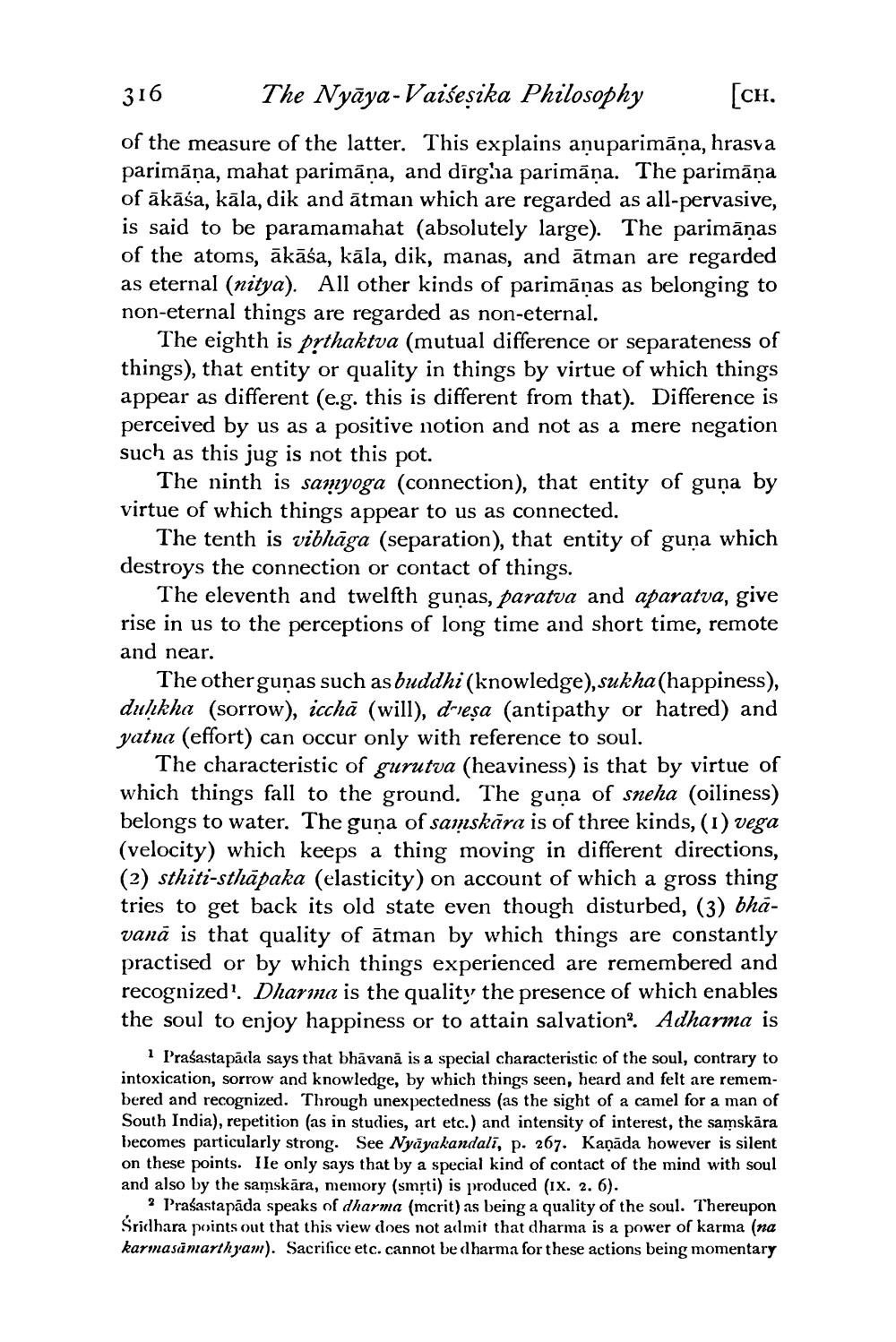________________
316
The Nyaya-Vaiseṣika Philosophy
[CH.
of the measure of the latter. This explains anuparimāṇa, hrasva parimāṇa, mahat parimāṇa, and dirgha parimāṇa. The parimāṇa of ākāśa, kāla, dik and ātman which are regarded as all-pervasive, is said to be paramamahat (absolutely large). The parimaņas of the atoms, ākāśa, kāla, dik, manas, and ātman are regarded as eternal (nitya). All other kinds of parimaņas as belonging to non-eternal things are regarded as non-eternal.
The eighth is pṛthaktva (mutual difference or separateness of things), that entity or quality in things by virtue of which things appear as different (e.g. this is different from that). Difference is perceived by us as a positive notion and not as a mere negation such as this jug is not this pot.
The ninth is samyoga (connection), that entity of guna by virtue of which things appear to us as connected.
The tenth is vibhāga (separation), that entity of guna which destroys the connection or contact of things.
The eleventh and twelfth gunas, paratva and aparatva, give rise in us to the perceptions of long time and short time, remote and near.
The other gunas such as buddhi (knowledge), sukha (happiness), dulikha (sorrow), iccha (will), drieṣa (antipathy or hatred) and yatna (effort) can occur only with reference to soul.
The characteristic of gurutva (heaviness) is that by virtue of which things fall to the ground. The guna of sneha (oiliness) belongs to water. The guna of samskāra is of three kinds, (1) vega (velocity) which keeps a thing moving in different directions, (2) sthiti-sthapaka (elasticity) on account of which a gross thing tries to get back its old state even though disturbed, (3) bhavana is that quality of atman by which things are constantly practised or by which things experienced are remembered and recognized'. Dharma is the quality the presence of which enables the soul to enjoy happiness or to attain salvation?. Adharma is
1 Prasastapāda says that bhāvanā is a special characteristic of the soul, contrary to intoxication, sorrow and knowledge, by which things seen, heard and felt are remembered and recognized. Through unexpectedness (as the sight of a camel for a man of South India), repetition (as in studies, art etc.) and intensity of interest, the samskāra becomes particularly strong. See Nyayakandali, p. 267. Kanāda however is silent on these points. He only says that by a special kind of contact of the mind with soul and also by the samskära, memory (smrti) is produced (IX. 2. 6).
2 Prasastapāda speaks of dharma (mcrit) as being a quality of the soul. Thereupon Sridhara points out that this view does not admit that dharma is a power of karma (na karmasāmarthyam). Sacrifice etc. cannot be dharma for these actions being momentary




